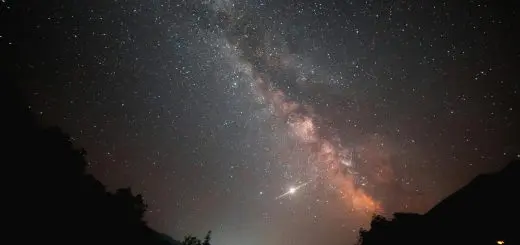Indus Valley Burial Practices: Insights into Beliefs

Looking for more amazing products? Check out our online store and explore our collection here! Happy shopping!
Before diving in, please note: This post is for informational purposes only. If you’d like to know more about how we approach topics, feel free to check out our friendly Disclaimer Page.
Hey there, amazing readers! 
We’re committed to delivering quality posts, and your support (even just sticking around despite the ads) means everything to us. So, bear with us, and thanks for helping us keep the good vibes rolling. Now, on to the fun stuff!
TRANSLATE BUTTON AT THE END OF THE ARTICLE
A Quick Overview
The Indus Valley Civilization, also known as the Harappan Civilization, flourished in the Bronze Age around 3300–1300 BCE in present-day Pakistan and northwest India.
This ancient civilization is renowned for its well-planned cities, advanced architecture, and sophisticated drainage systems.
One crucial aspect that sheds light on the beliefs and cultural practices of the people of the Indus Valley Civilization is their burial practices.
The burial sites discovered by archaeologists provide valuable insights into the religious beliefs, social structure, and customs of this ancient civilization.
Introduction to Indus Valley Civilization
The Indus Valley Civilization is one of the oldest and most advanced civilizations in the ancient world.
Stretching across a vast region that includes parts of modern-day Pakistan, India, and Afghanistan, this civilization thrived along the fertile Indus River and its tributaries.
The cities of Harappa and Mohenjo-Daro are among the most well-known archaeological sites of this civilization, showcasing remarkable urban planning and advanced engineering skills.
Significance of Burial Practices
Burial practices play a significant role in understanding the cultural and religious beliefs of a society.
In the case of the Indus Valley Civilization, the burial sites unearthed by archaeologists provide valuable clues about their beliefs regarding death, the afterlife, and the societal structure.
By studying these burial practices, researchers can gain insights into the spiritual and ritualistic aspects of this ancient civilization.
Excavations and Discoveries
Archaeologists have unearthed numerous burial sites across the region once inhabited by the Indus Valley Civilization.
These sites range from simple burials to elaborate grave structures, each offering a glimpse into the burial practices of the ancient Harappan people.
The meticulous excavation of these sites has revealed a wealth of information about the customs, rituals, and beliefs of this civilization.
Rituals and Ceremonies
The burial practices of the Indus Valley Civilization suggest that they placed great importance on rituals and ceremonies associated with death.
The elaborate grave structures, grave goods, and offerings found in burial sites indicate that these practices were not merely practical but held deep symbolic and religious significance for the ancient people.
The presence of various artifacts and symbols in the burials points towards a complex funerary tradition.
Types of Burials Found
Archaeologists have discovered different types of burials in the Indus Valley Civilization, ranging from simple pit burials to more elaborate grave structures.
Some burials contain multiple individuals, while others are solitary.
The variety of burial types suggests that different social classes or individuals may have had distinct burial practices, reflecting the diversity within the ancient Harappan society.
Grave Goods and Offerings
One common feature of the burials in the Indus Valley Civilization is the inclusion of grave goods and offerings.
These objects, ranging from pottery and jewelry to tools and weapons, were placed in the graves alongside the deceased.
The presence of these grave goods suggests a belief in an afterlife or the need to provide for the deceased in the journey to the next realm.
The types and quantities of grave goods also hint at the social status and wealth of the individuals buried.
Comparison to Other Civilizations
The burial practices of the Indus Valley Civilization bear similarities to those of other ancient civilizations, such as the Egyptians and Mesopotamians.
Like these civilizations, the Harappan people believed in an afterlife and provided grave goods for the deceased.
However, the unique architectural features and artifacts found in the burial sites of the Indus Valley set them apart and offer a distinct insight into the beliefs and customs of this civilization.
Possible Beliefs and Afterlife
The burial practices of the Indus Valley Civilization suggest a belief in an afterlife or some form of spiritual continuation after death.
The careful placement of grave goods and offerings, the orientation of the burials, and the presence of symbolic artifacts all point towards a complex belief system regarding death and the journey to the next life.
While the exact religious beliefs of the Harappan people remain a subject of debate, their burial practices provide valuable clues to their worldview.
Gender and Age Differences
Studies of the burial sites in the Indus Valley Civilization have revealed interesting gender and age differences in burial practices.
For example, some burials contain distinct grave goods associated with either male or female individuals, indicating a gender-specific treatment in death rituals.
Additionally, the presence of child burials with unique artifacts suggests a consideration for age-based practices within the society.
Symbolism in Burial Sites
The burial sites of the Indus Valley Civilization are rich in symbolism, with various artifacts and structures carrying deep meaning for the ancient people.
Symbols such as the unicorn motif, the pipal tree, and the depiction of deities reflect the religious and spiritual beliefs of the Harappan society.
The careful placement of these symbols in burial contexts highlights their significance in rituals associated with death and the afterlife.
Evolution of Burial Practices
The burial practices of the Indus Valley Civilization evolved over time, reflecting changes in social, cultural, and religious norms.
Early burials were simple and straightforward, while later burials became more elaborate, with the inclusion of complex grave structures and a wider variety of grave goods.
The evolution of burial practices provides insights into the shifting beliefs and practices of the ancient Harappan people and their responses to environmental, economic, and social changes.
Conclusion and Future Research
The burial practices of the Indus Valley Civilization offer a unique window into the beliefs, customs, and social structure of this ancient civilization.
Through the excavation and study of burial sites, archaeologists continue to unravel the mysteries of the Harappan people and their worldview.
Future research into the burial practices of the Indus Valley Civilization holds the promise of shedding further light on the spiritual, ritualistic, and societal aspects of this fascinating ancient culture.
By delving deeper into the burial sites and artifacts of the Harappan civilization, researchers can uncover more about the beliefs and practices that shaped this enigmatic society.

The Enlightenment Journey is a remarkable collection of writings authored by a distinguished group of experts in the fields of spirituality, new age, and esoteric knowledge.
This anthology features a diverse assembly of well-experienced authors who bring their profound insights and credible perspectives to the forefront.
Each contributor possesses a wealth of knowledge and wisdom, making them authorities in their respective domains.
Together, they offer readers a transformative journey into the realms of spiritual growth, self-discovery, and esoteric enlightenment.
The Enlightenment Journey is a testament to the collective expertise of these luminaries, providing readers with a rich tapestry of ideas and information to illuminate their spiritual path.
Our Diverse Expertise
While our primary focus is on spirituality and esotericism, we are equally passionate about exploring a wide range of other topics and niches 

To ensure we provide the most accurate and valuable insights, we collaborate with trusted experts in their respective domains 
Our blog originally focused on spirituality and metaphysics, but we’ve since expanded to cover a wide range of niches. Don’t worry—we continue to publish a lot of articles on spirituality! Frequently visit our blog to explore our diverse content and stay tuned for more insightful reads.
Hey there, amazing reader! 
Check out our store here and take a peek at some of our featured products below! Thanks for being awesome!










